Time capsules Prized clocks on display at Manitoba Museum
Read this article for free:
or
Already have an account? Log in here »
To continue reading, please subscribe:
Monthly Digital Subscription
$0 for the first 4 weeks*
- Enjoy unlimited reading on winnipegfreepress.com
- Read the E-Edition, our digital replica newspaper
- Access News Break, our award-winning app
- Play interactive puzzles
*No charge for 4 weeks then price increases to the regular rate of $19.00 plus GST every four weeks. Offer available to new and qualified returning subscribers only. Cancel any time.
Monthly Digital Subscription
$4.75/week*
- Enjoy unlimited reading on winnipegfreepress.com
- Read the E-Edition, our digital replica newspaper
- Access News Break, our award-winning app
- Play interactive puzzles
*Billed as $19 plus GST every four weeks. Cancel any time.
To continue reading, please subscribe:
Add Free Press access to your Brandon Sun subscription for only an additional
$1 for the first 4 weeks*
*Your next subscription payment will increase by $1.00 and you will be charged $16.99 plus GST for four weeks. After four weeks, your payment will increase to $23.99 plus GST every four weeks.
Read unlimited articles for free today:
or
Already have an account? Log in here »
Hey there, time traveller!
This article was published 15/02/2024 (649 days ago), so information in it may no longer be current.
The Mennonite wall clock has marked — with metronomic tick-tock precision — political and societal upheaval throughout the centuries.
Fifteen are on temporary display at the Manitoba Museum in an exhibition developed by the Kroeger Clocks Heritage Foundation, in partnership with the Mennonite Heritage Village museum.
The timepieces were made between the late 1700s and early 1900s in Mennonite workshops in Ukraine, as meticulous clock builders passed the craft down through generations.
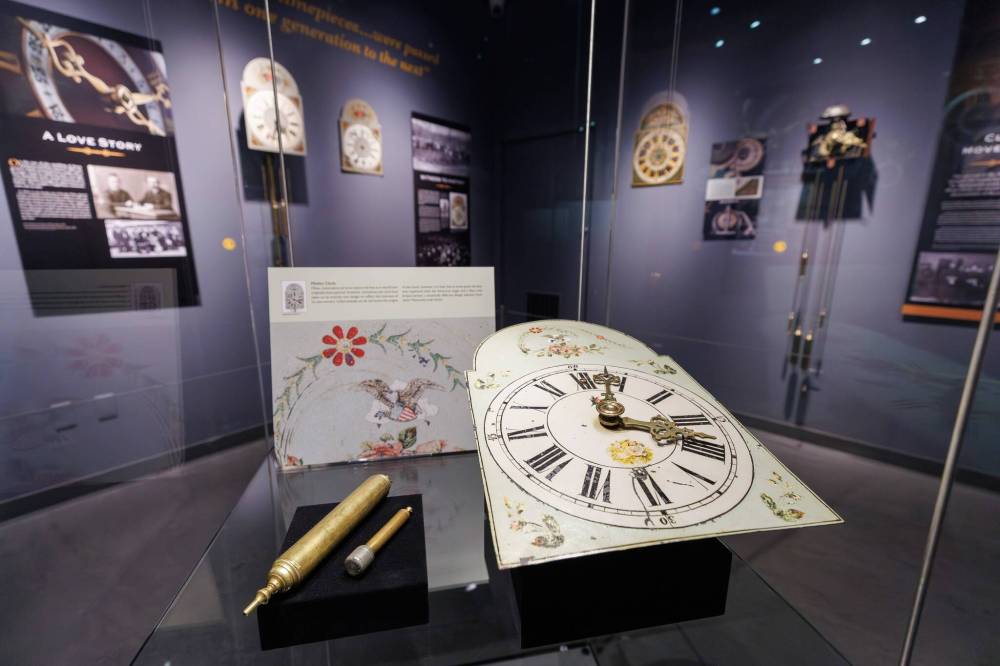
MIKE DEAL / WINNIPEG FREE PRESS
The ‘Mielitz’ clock was made by Abraham Kroeger (1791–1872) in Rosenthal, Russian Empire (now Ukraine), ca. 1835.
The clocks were prized possessions and were carefully transported to Manitoba by the Mennonite diaspora. Beyond providing rhythmic structure to the day, they represent Mennonite stories of migration, ingenuity, art and life.
The exhibit, which opened last October, is set to close Feb. 25.
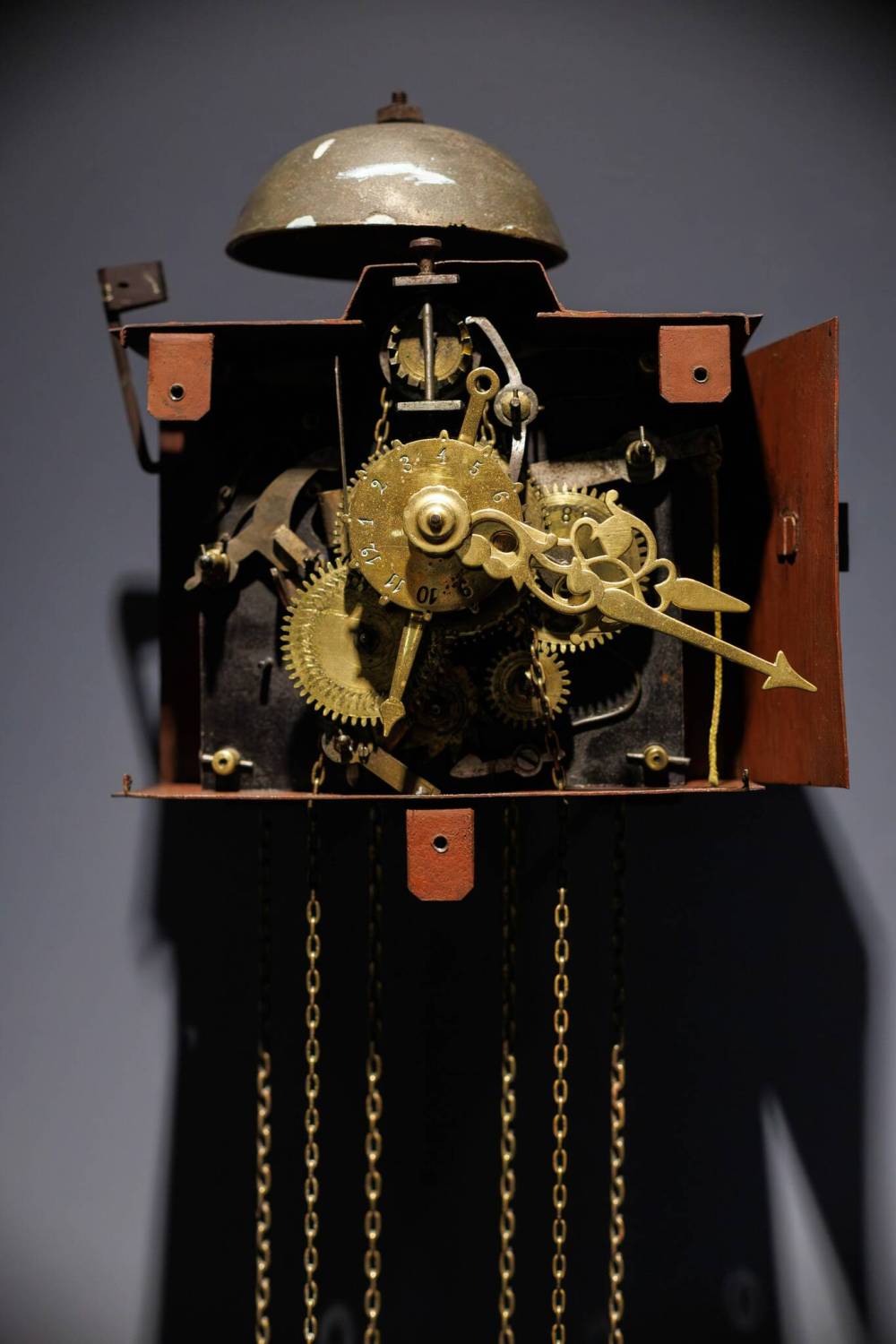
MIKE DEAL / WINNIPEG FREE PRESS
This “Cadillac Clock” has all the bells and whistles! It demonstrates the highest sophistication of Mennonite wall clocks, telling the hour, minute, month, and day, and also features an alarm setting (gears and mechanisms, above and below). In contrast to the rope-driven clock, this one has a chain drive. Rope drives required frequent cleaning, as the fibres clogged the mechanism. Chain drives were more expensive but practical.
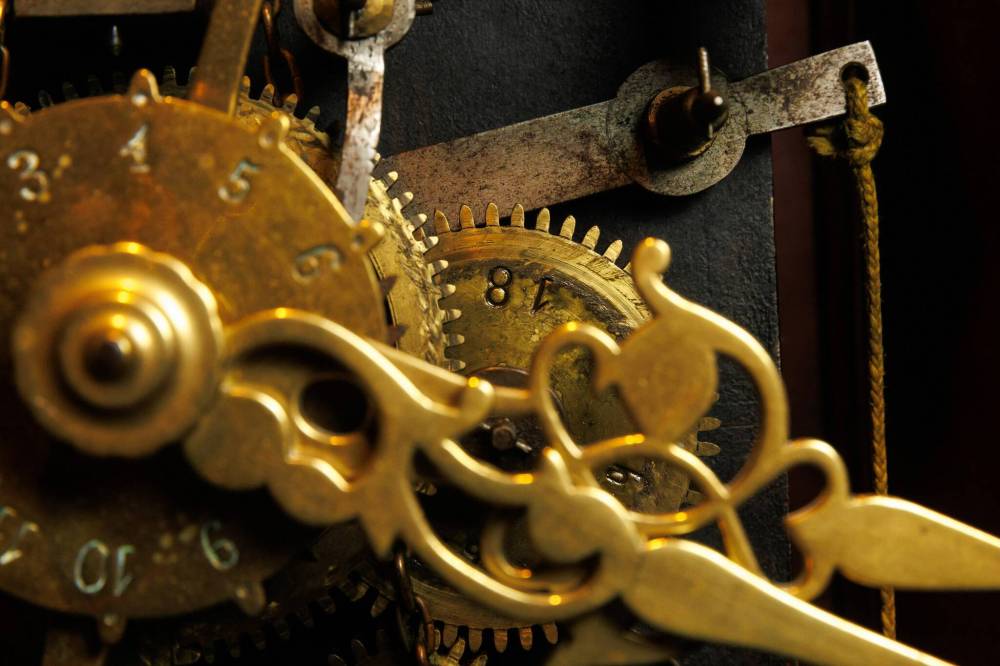
MIKE DEAL / WINNIPEG FREE PRESS
The “Cadillac” clock showcases the sophistication and ingenuity of the timepieces.
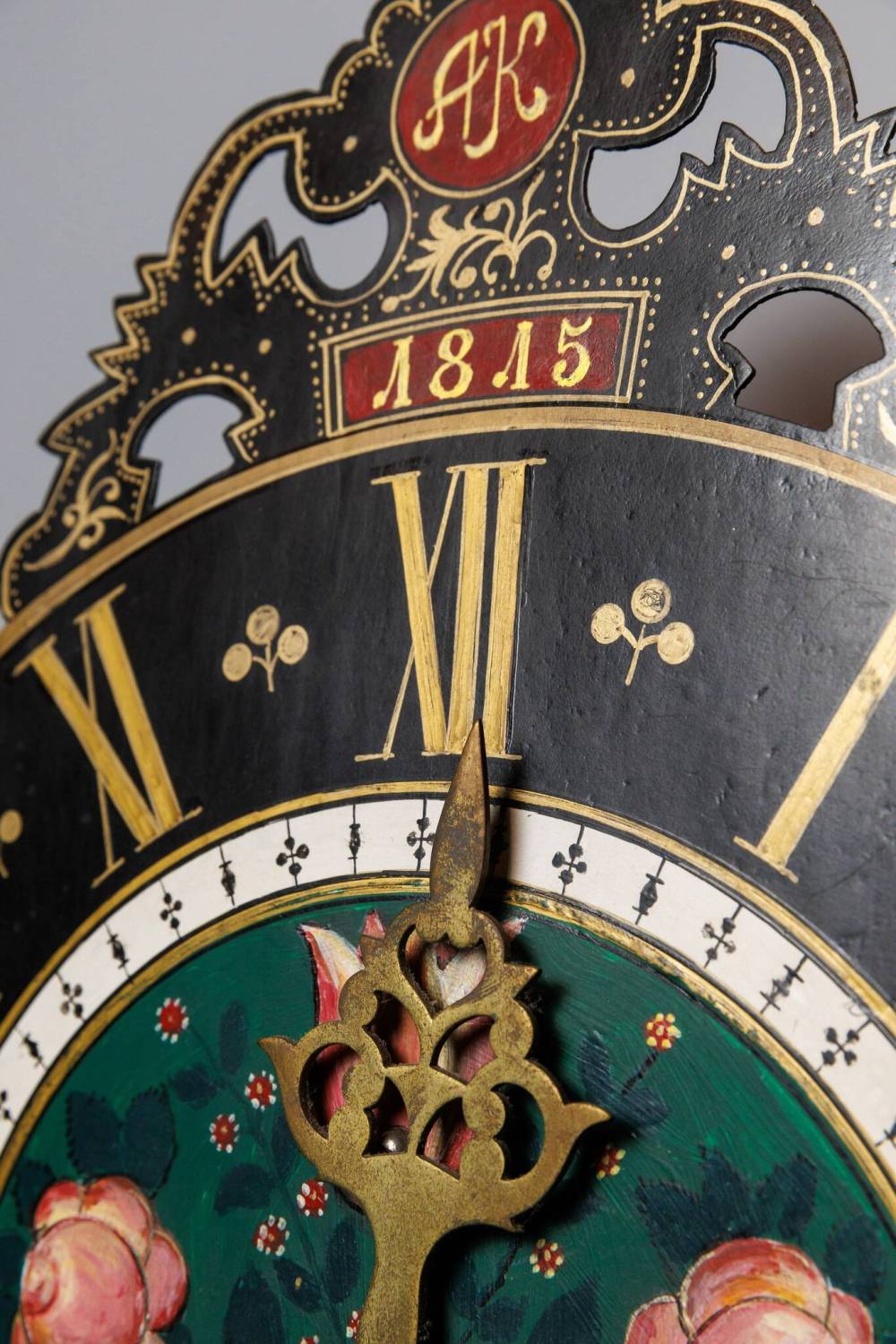
MIKE DEAL / WINNIPEG FREE PRESS
Abraham Kroeger (1791–1872) likely made this clock in Rosenthal around 1815.
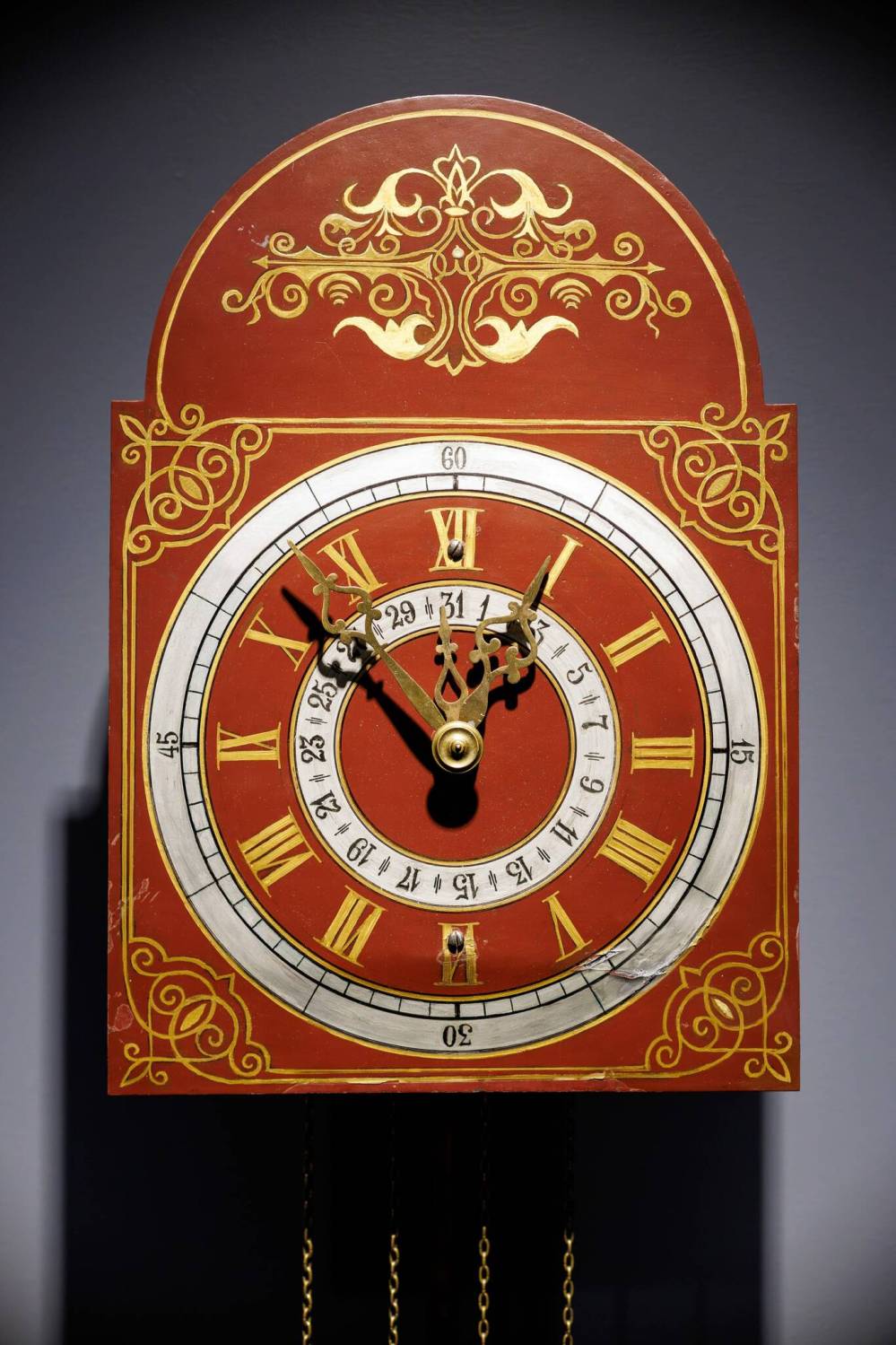
MIKE DEAL / WINNIPEG FREE PRESS
The 'Schulz' clock was made during the peak period of Kroeger clock manufacturing, between 1890 and 1910. It was commissioned by a wealthy Mennonite factory owner and would have been one of the most expensive models Kroeger Clockmakers made.
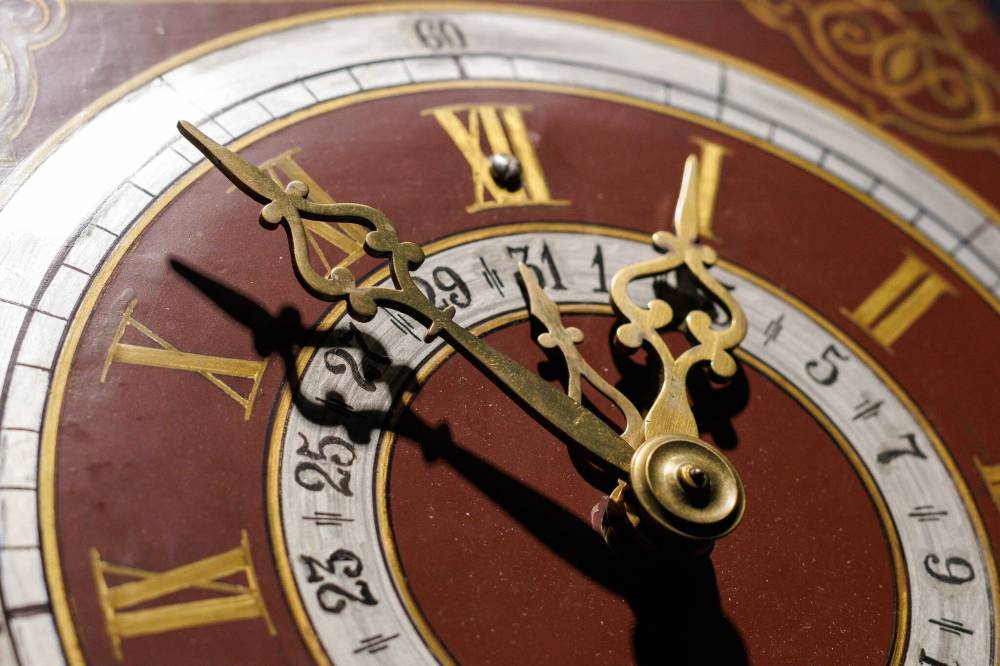
MIKE DEAL / WINNIPEG FREE PRESS
On the eve of the wedding of Anna Zacharias and Peter Schulz in 1893, the groom's father presented the couple with a Kroger clock to celebrate their marriage. The beautiful clock would become part of their family heritage for generations to follow. The couple's happiness, however, was not to last. In 1914, as war broke out in Europe, Peter died of a heart condition and left Anna a widow. In 1927, the family journeyed across the Atlantic Ocean to Canada, with the precious clock packed in their luggage, a reminder of life and family in Russia. Like Anna and Peter, Mennonite couples often received wall clocks as wedding gifts. Clocks represented a new start for young couples and symbols of prosperity and legacy as they were passed down from one generation to the next.
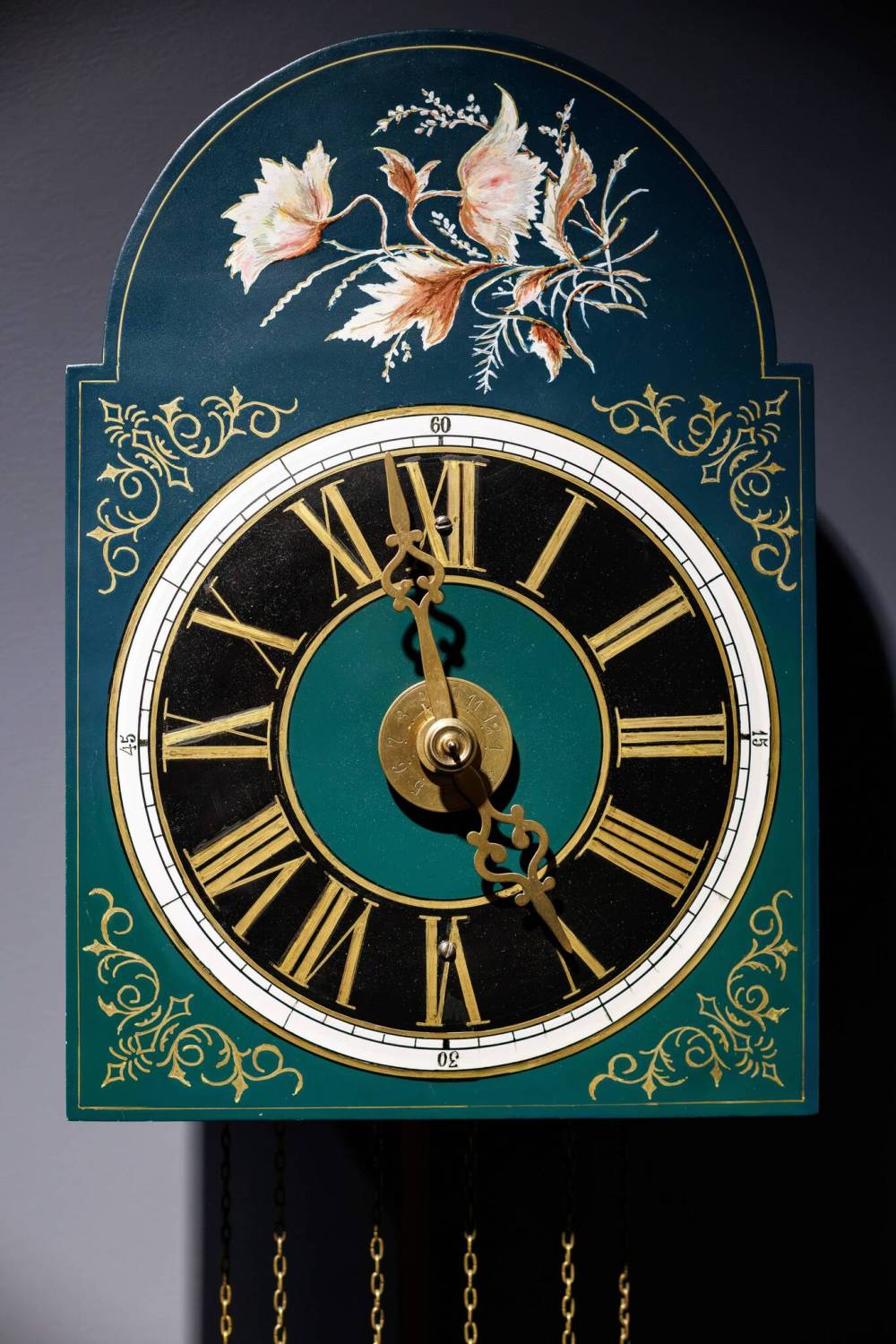
MIKE DEAL / WINNIPEG FREE PRESS
The ‘Zaporoshye’ clock belonged to a family that, despite extreme hardship and suffering, stayed in the Soviet Union.

MIKE DEAL / WINNIPEG FREE PRESS
This clock beautifully illustrates the decal decorations that adorned Mennonite clocks at the turn of the twentieth century. Replacing hand-painted artwork on clock faces with decals became more efficient when the Industrial Revolution made large-scale production possible.
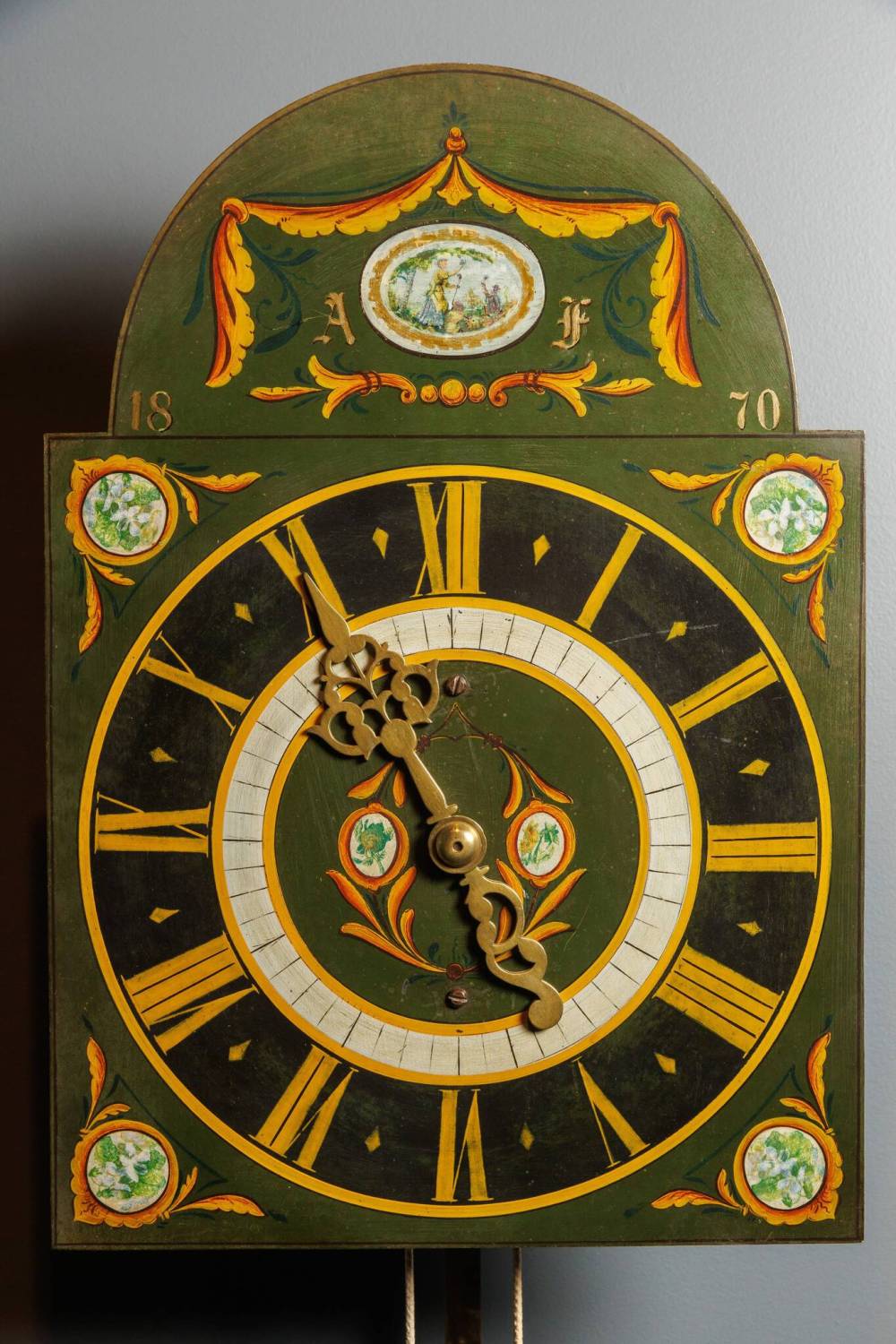
MIKE DEAL / WINNIPEG FREE PRESS
The ‘Lilac’ Mandtler (1870) is a one-handed clock. At the time, knowing the exact minute of the day was not crucial.
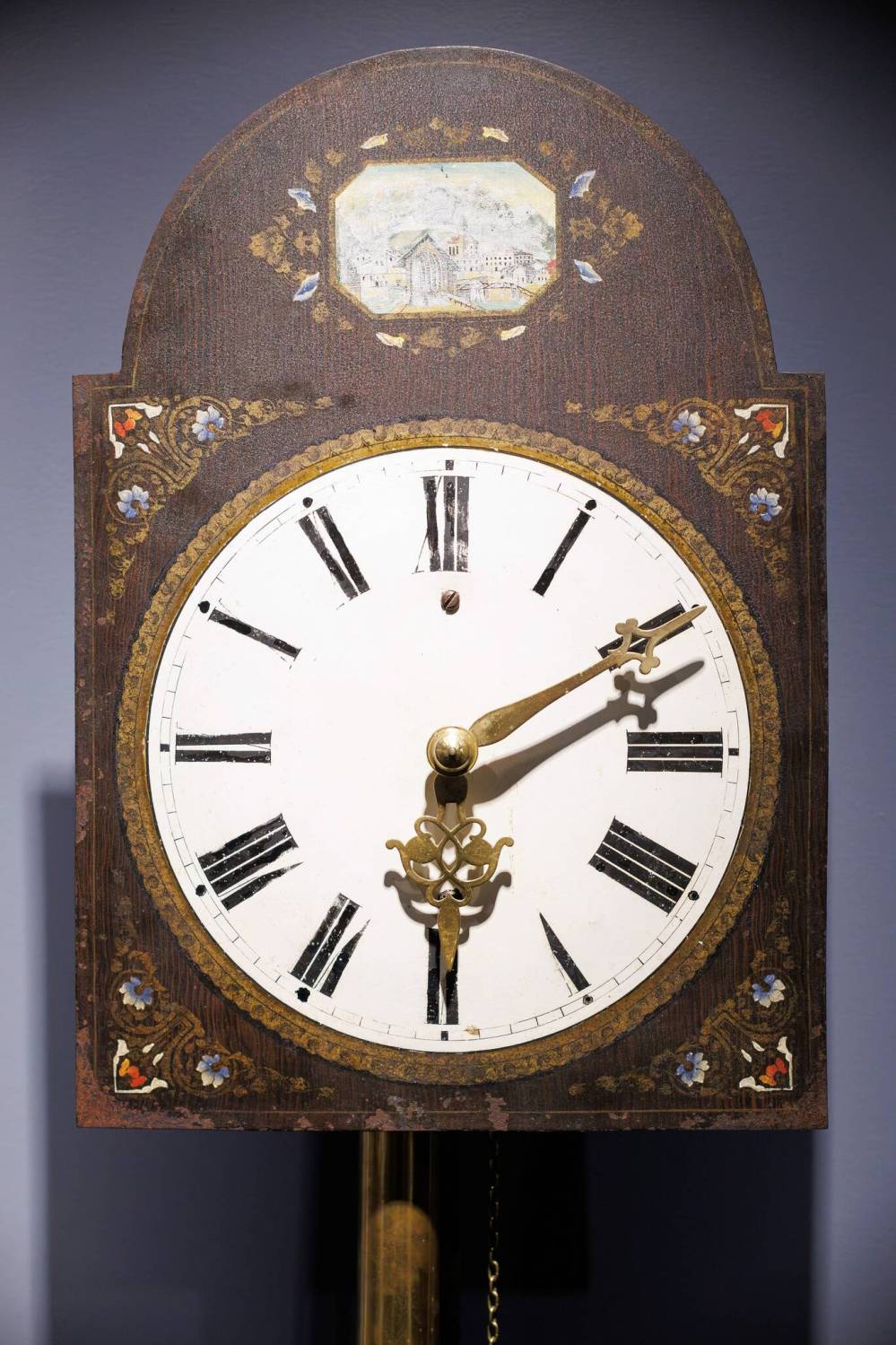
MIKE DEAL / WINNIPEG FREE PRESS
Gerhard Mandtler made this clock in 1865. The painted wood grain pattern was unique to Mennonite clocks.
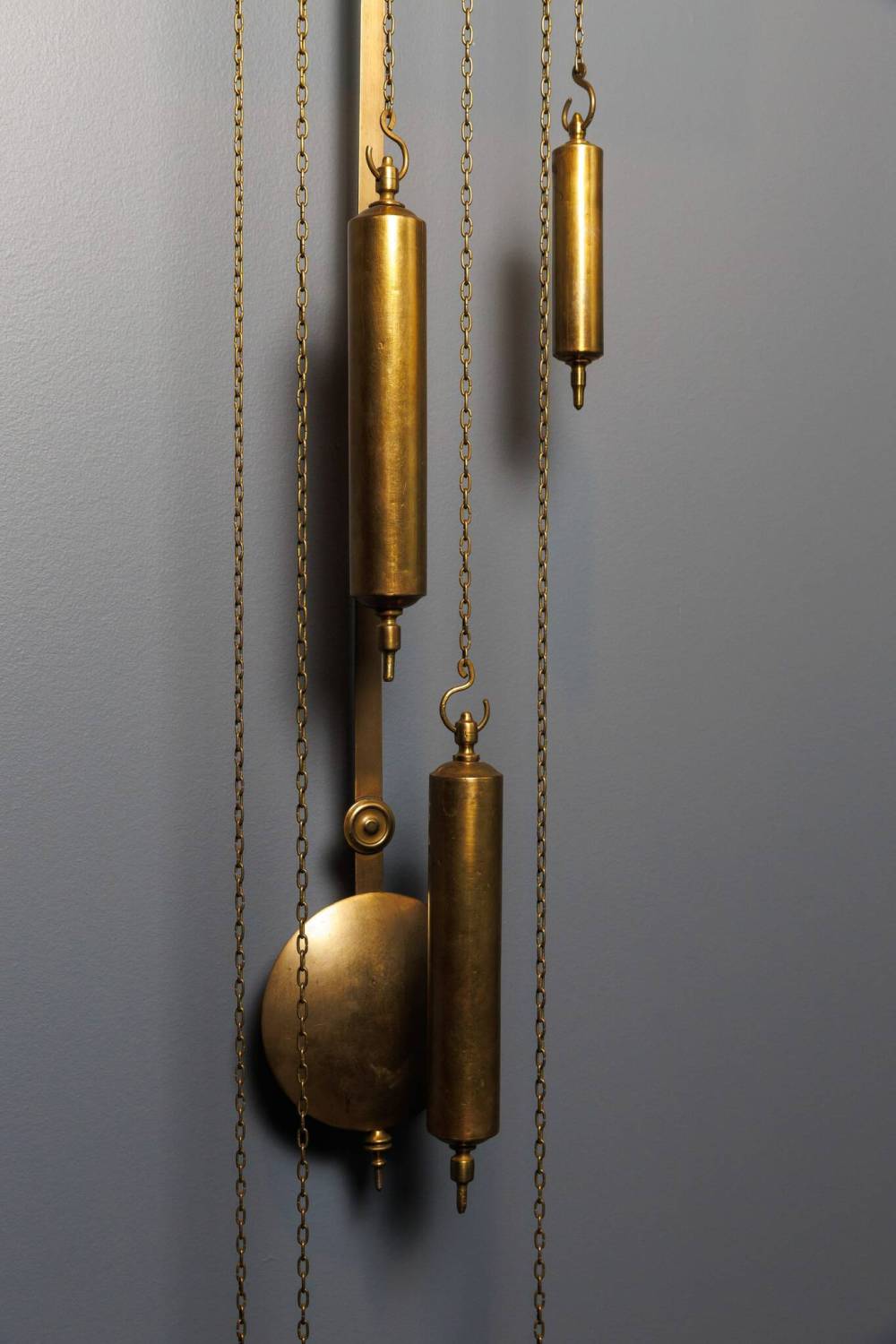
MIKE DEAL / WINNIPEG FREE PRESS
Fifteen Mennonite wall clocks are on temporary display at the Manitoba Museum in an exhibition developed by the Kroeger Heritage Clocks Foundation, in partnership with the Mennonite Heritage Museum.

Mike Deal started freelancing for the Winnipeg Free Press in 1997. Three years later, he landed a part-time job as a night photo desk editor.
Our newsroom depends on a growing audience of readers to power our journalism. If you are not a paid reader, please consider becoming a subscriber.
Our newsroom depends on its audience of readers to power our journalism. Thank you for your support.
History
Updated on Thursday, February 15, 2024 2:42 PM CST: Corrects location of exhibit
Updated on Saturday, February 17, 2024 10:17 AM CST: Corrects name of the museums




